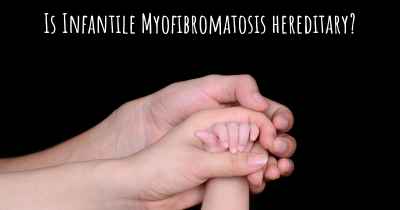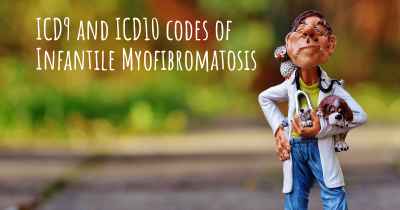What is the history of Infantile Myofibromatosis?
When was Infantile Myofibromatosis discovered? What is the story of this discovery? Was it coincidence or not?

Infantile Myofibromatosis (IM) is a rare disorder characterized by the development of benign tumors in various parts of the body. These tumors, known as myofibromas, primarily affect infants and young children. The history of Infantile Myofibromatosis dates back to the early 20th century when the condition was first recognized and described.
Early Observations:
The first documented case of Infantile Myofibromatosis was reported in 1905 by Dr. William James in a medical journal. He described a case of multiple tumors in an infant, which he referred to as "fibromatosis congenita multiplex." Over the following decades, several similar cases were reported, and the condition began to gain recognition among the medical community.
Naming and Classification:
In 1954, Dr. John Stout proposed the term "Infantile Myofibromatosis" to describe this condition more accurately. He emphasized the myofibroblastic nature of the tumors, which are composed of cells with characteristics of both muscle cells and fibroblasts. This term has since been widely accepted and used to classify the disorder.
Advancements in Understanding:
Throughout the 20th century, researchers made significant progress in understanding the underlying causes and characteristics of Infantile Myofibromatosis. They discovered that the condition can manifest in different forms, including solitary and multicentric types. Solitary IM involves the presence of a single tumor, while multicentric IM involves multiple tumors in different locations.
Genetic Discoveries:
In recent years, genetic studies have shed light on the genetic basis of Infantile Myofibromatosis. Researchers have identified mutations in the PDGFRB gene as a common cause of the disorder. The PDGFRB gene provides instructions for producing a protein involved in cell growth and division. Mutations in this gene can lead to the uncontrolled growth of cells, resulting in the formation of myofibromas.
Prevalence and Prognosis:
Infantile Myofibromatosis is considered a rare condition, with an estimated incidence of 1 in 150,000 to 1 in 400,000 births. It affects both males and females equally. The prognosis for infants with IM varies depending on the type and location of the tumors. Solitary tumors generally have a better prognosis, with a higher chance of spontaneous regression or successful surgical removal. Multicentric tumors, on the other hand, can be more challenging to manage and may require a multidisciplinary approach involving surgery, chemotherapy, and other treatments.
Ongoing Research and Treatment:
As Infantile Myofibromatosis is a rare disorder, research efforts are ongoing to further understand its genetic basis, improve diagnostic methods, and develop targeted treatments. Current treatment options for IM focus on surgical removal of tumors, but additional therapies such as chemotherapy, radiation, and targeted drug therapies are being explored.
Support and Awareness:
Various organizations and support groups have been established to provide resources, support, and raise awareness about Infantile Myofibromatosis. These initiatives aim to connect affected families, facilitate information sharing, and promote research into better treatment options.
In conclusion, Infantile Myofibromatosis is a rare disorder characterized by the development of benign tumors in infants and young children. The history of this condition dates back to the early 20th century when it was first recognized and described. Over the years, advancements in understanding its genetic basis and classification have been made. Ongoing research and support initiatives continue to improve the diagnosis, treatment, and overall management of Infantile Myofibromatosis.








